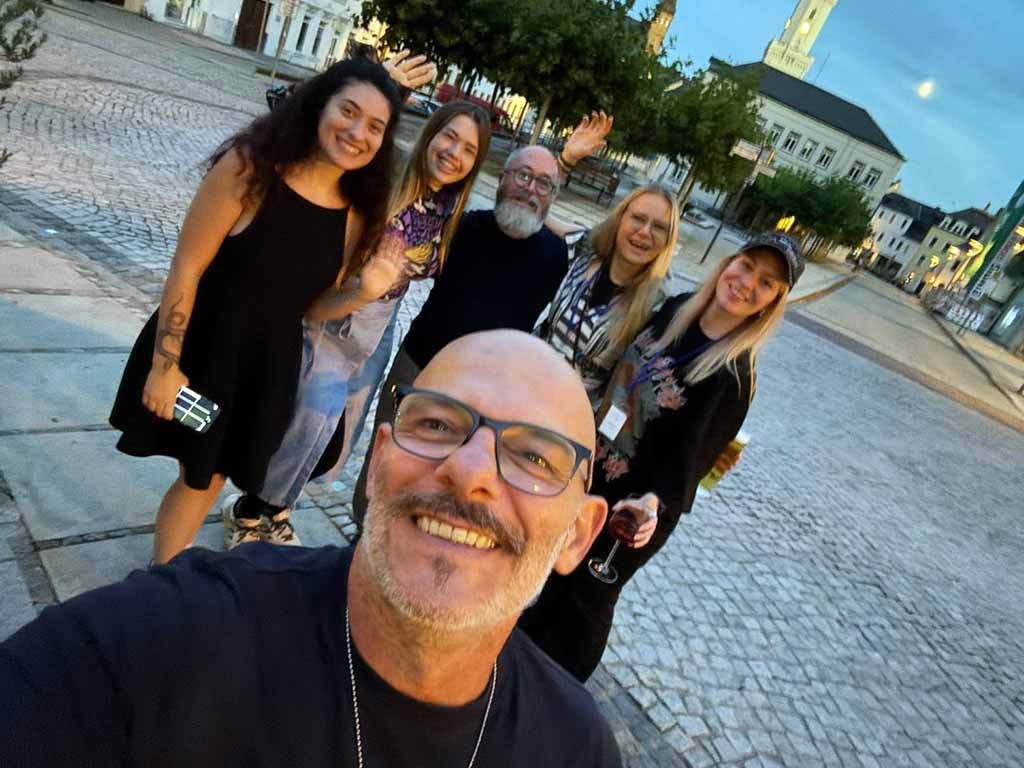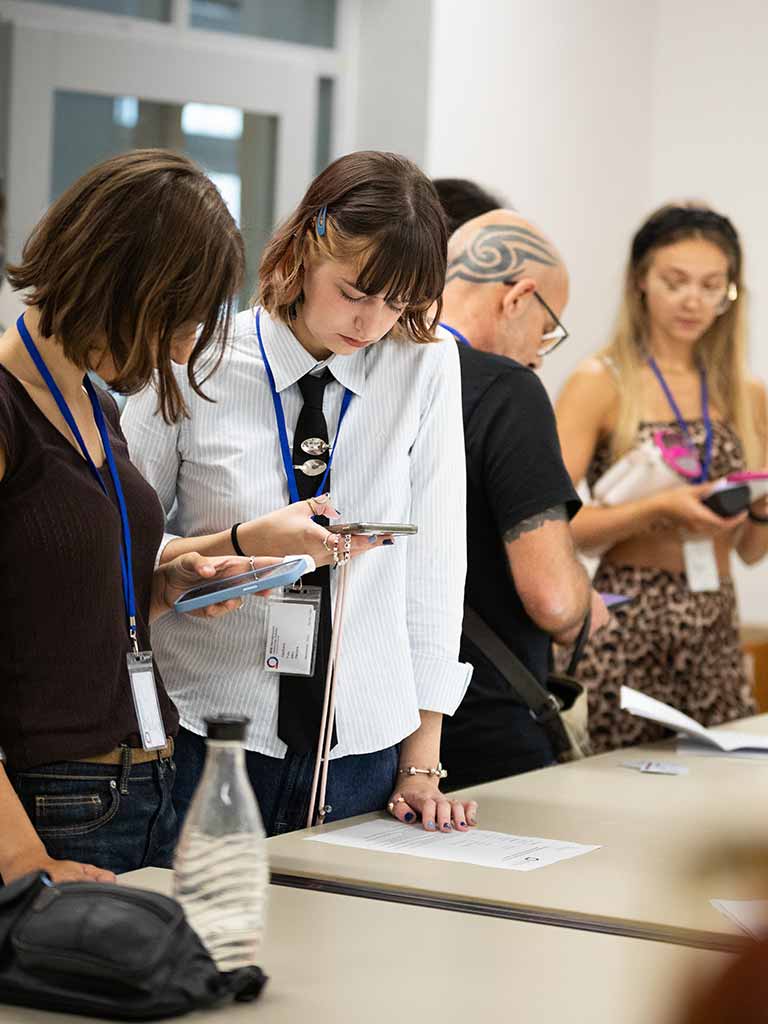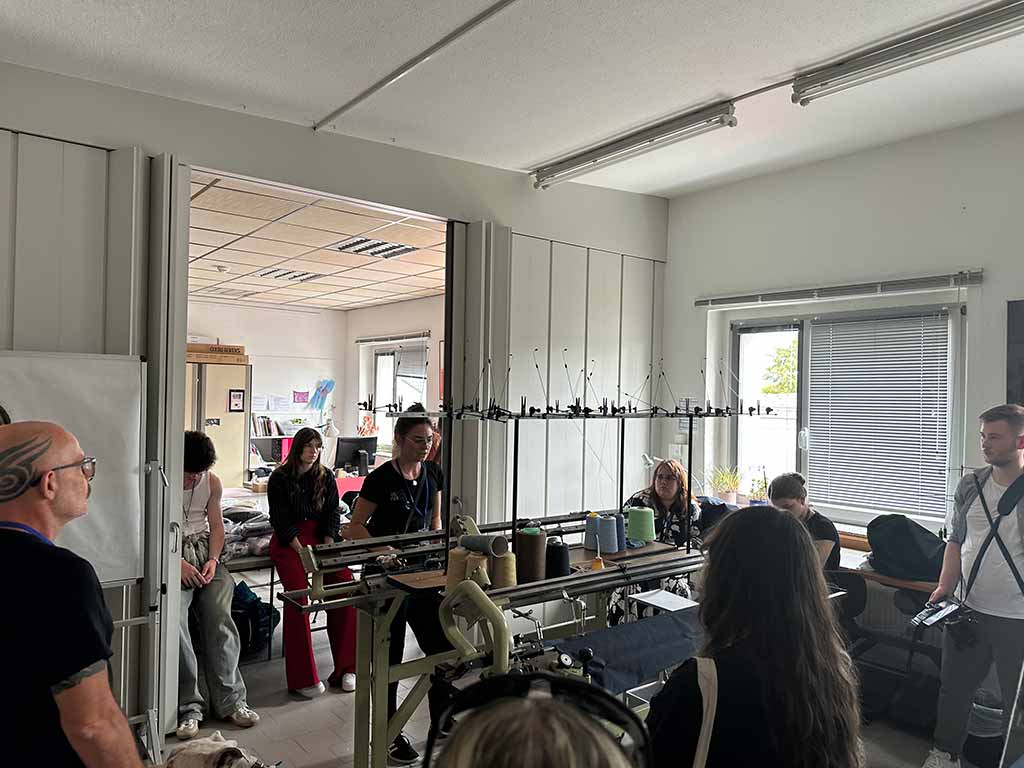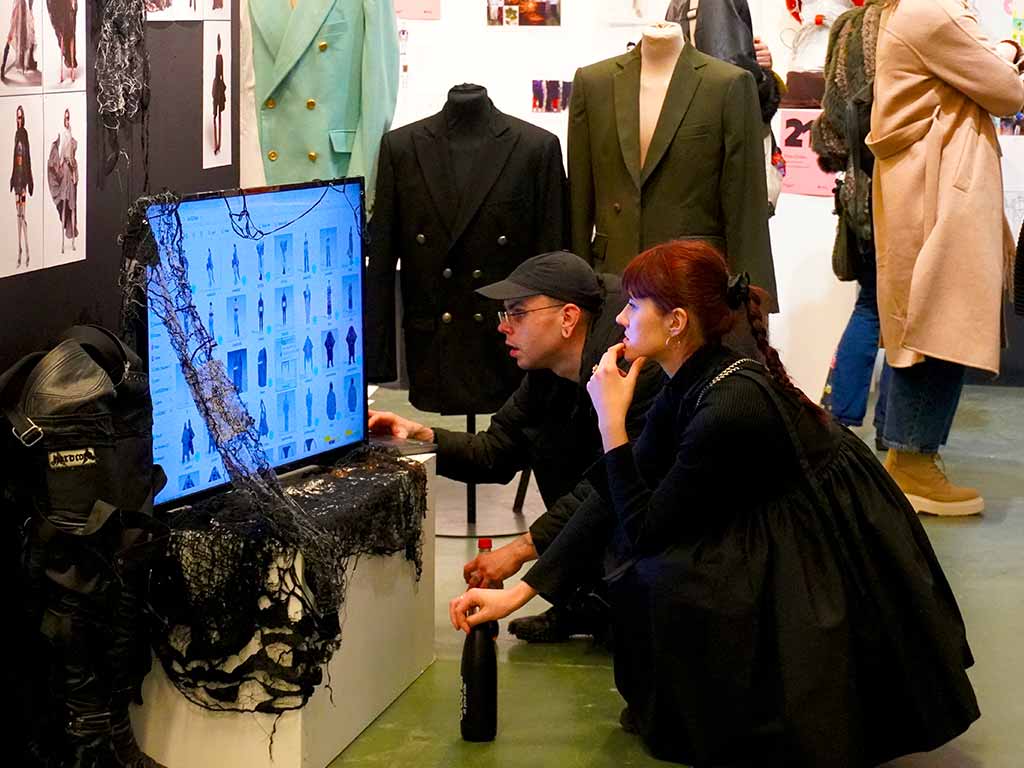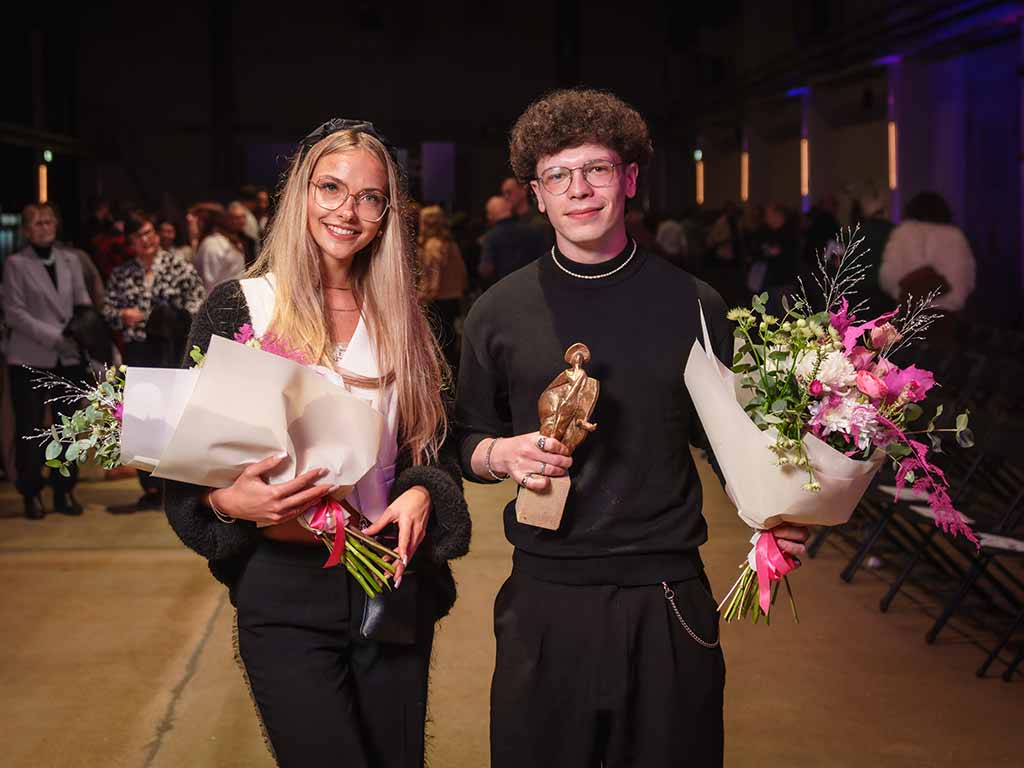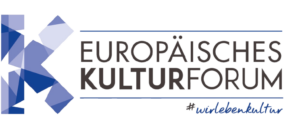
When tradition meets technology – A conversation with Cristiano Carciani about the Makerspace 2025 in the Capital of Culture region
As part of the international makerspace project, students from eleven partner universities worked for two weeks at the intersection of fashion, technology, and craftsmanship. We spoke with Cristiano Carciani, Director of the Amsterdam Fashion Academy, who supported the project, about creative breakthroughs, intercultural collaboration, and the future of fashion.
Cristiano, what impressed you most when observing the students during the makerspace?
Cristiano: The most fascinating thing was seeing how quickly the students grew in those two weeks—in their confidence, in their creativity, but also in their technical competence. At the beginning, many were still a bit cautious about using digital tools like CLO3D, 3D printing, or digital embroidery. But with each day, they became bolder and more willing to experiment.
By the end, you could see how they were no longer just working on their own, but were coming together across disciplines, combining ideas, and developing truly sophisticated projects—projects that could have been showcased immediately on a festival stage.
Were there any particular “aha” moments that stick in your memory?
Cristiano: There were many. It was wonderful to witness that moment when a spark ignites—for example, when someone realizes, “I can scan my hand-knitted sample and turn it into a 3D-printed structure!” Or when laser cutting suddenly opens up a completely new way to interpret traditional embroidery patterns. Some students also had real breakthroughs in CLO3D—when they animated their digital garments and realized they could tell entire stories with them. It was particularly exciting when different techniques converged: digital knitting combined with laser-cut elements or even holographic representations. In those moments, the creative energy in the room was almost tangible.
The makerspace brought together students from different countries and disciplines. How did that work?
Cristiano: Great, to be honest. The makerspace was a true meeting point—not just between universities, but also between cultures and disciplines. Eleven partner universities meant eleven different perspectives on fashion. Instead of these differences forming barriers, they became sources of inspiration. Students exchanged techniques, explained their working methods to each other, and found common approaches, even when they came from completely different backgrounds. And this extended far beyond the workshops: Through shared meals, excursions, and conversations, friendships were formed that will surely last a long time. I think this is one of the most beautiful outcomes of the project.
Were there any moments that personally surprised or inspired you?
Cristiano: Yes, absolutely. What inspired me most was how the students expanded on the tools we provided them. Some used the laser cutter not just technically, but reinterpreted traditional patterns from their cultural backgrounds—in a modern yet deeply personal way. Others used CLO3D in a depth I wouldn’t have expected—not just to simulate clothing, but to convey emotions and stories. This interplay of cultural identity, technology, and creativity was truly moving.
Which tools and methods were used most intensively in the makerspace?
Cristiano: CLO3D was clearly one of the most used tools. Many students returned to it again and again, whether for design, animations, or preparing holographic elements. The 3D printers, scanners, and laser cutter were also in constant use because they produced immediately visible results that could be combined with the fashion designs. The combination of digital embroidery or knitting with traditional craft techniques was also particularly exciting. What impressed me most personally were the hybrid works – garments that combined different technologies while still maintaining a well-crafted approach. Some CLO3D animations ultimately reached an almost professional level, which was truly remarkable in such a short time.
What challenges arose – and how were they solved?
Cristiano: Of course there were some. Technically, it wasn’t easy at first – some students struggled with software problems or the machines. But the great thing was: they helped each other. Peer-to-peer learning worked incredibly well. Organizationally, it was a challenge to coordinate all the workshops and equipment. The role of the coordinators was crucial in maintaining an overview. And creatively? Well, sometimes the students just wanted to try everything – which is understandable, but can also lead to overwhelm. Our daily feedback sessions helped set priorities and focus ideas.
What do you think should definitely be retained in future makerspaces?
Cristiano: The combination of digital and physical work – that was the core of the success. Students learned not only how digital simulations are created, but also how they can be transformed into real garments – and vice versa. The collaborative workshop format should definitely be retained. This open, interactive atmosphere encourages experimentation and exchange on equal terms. And the holo-show, i.e. the holographic presentation, has enormous potential. It brings a whole new dimension to the fashion world – one that excites students and audiences alike.
What technical or didactic approaches would you recommend for the future?
Cristiano: I would like to see us rely even more heavily on technologies that combine craftsmanship and digitality – for example, AR and VR applications, motion capture, or AI-supported design processes. At the same time, it is important to maintain the connection to traditional methods. Because it is precisely in this friction – between the old and the new – that innovation arises. The workshop principle has proven very successful in terms of teaching, but I would also add more reflection phases in which students consciously analyze their decisions and processes.
When you think about the future of the project – where do you see the greatest potential?
Cristiano: Definitely in networking. The makerspace creates an international network of young designers who are equally active in craftsmanship, technology, and sustainability. It’s not just a workshop, but an incubator for new ways of thinking in fashion. I could well imagine expanding the format – with even more partner universities or collaborations with industry. And of course, the holographic presentation format has enormous potential. It shows us how fashion can be presented and experienced in the future – not just on the runway, but also digitally and immersively.
Your personal conclusion?
Cristiano: For me, the makerspace has been an inspiring journey. I’ve seen students develop from cautious beginners into bold innovators. Those “aha” moments—when digital tools and craftsmanship suddenly mesh—were magical. And for me, collaboration across cultures, disciplines, and borders was the true essence of the project. The makerspace is more than a learning space—it’s a glimpse into how the future of fashion can emerge: through a spirit of experimentation, openness, and the courage to combine tradition with technology.

